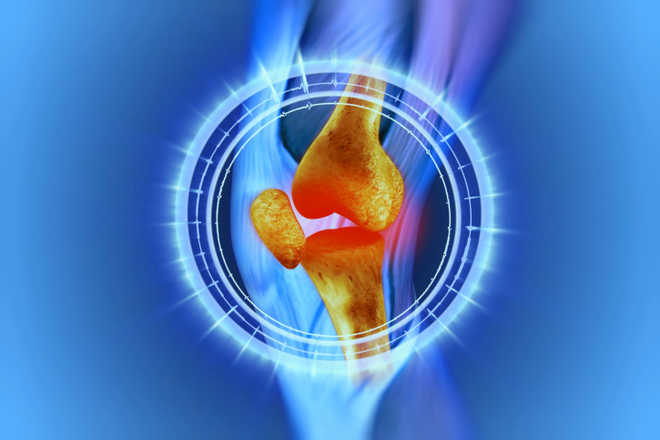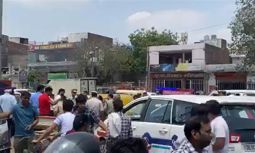
Photo source: Thinkstock
New Delhi
Scientists from IIT Guwahati have synthesised mats made of silk-proteins and bioactive glass fibres that they believe can assist the growth of bone cells and repair worn-out joints in arthritis patients.
The disease most commonly affects joints in the knees, hips, hands, feet, and spine and is marked by the breakdown of joint cartilage and underlying bones.
Left untreated, it can cause severe pain, swelling, and eventually limited range of movement.
"Current clinical treatment methods are limited by lack of viable tissue substitutes to aid the repair process," Biman B Mandal from Indian Institute of Technology Guwahati (IITG) told PTI.
To develop a suitable tissue substitute, scientists, including those from the University College London in the UK, looked into the natural bone-cartilage interface and tried to mimic it synthetically in lab conditions.
Knee osteoarthritis is the most common bone and joint disease in India. However, Mandal pointed out that the available clinical grafts were expensive.
"We used silk, a natural protein to fabricate electrospun mats to mimic the cartilage portion and bioactive glass to develop a composite material, similar to the natural tissue," said Mandal.
For the mat, scientists used a kind of silk easily available in North-east India.
"Muga (Assam) silk is endowed with properties that enhance the healing process," he said.
The researchers adopted a green fabrication approach for the developing the silk composite mats - electrospinning.
"It is similar to knitting, except that it utilises electric high voltage force to draw ultrafine fibres," Mandal said.
A layer-by-layer approach was followed, where the bone layer was first formed, on top of which the cartilage layer was developed. The resulting composite mat resembled the architecture of the bone-cartilage interface.
To assist the regenerative process, the mats would be grafted in the defected joint with cells harvested from the patient.
"The mats bond with the native tissue and acts as an artificial tissue construct. Eventually the mats degrade with time and new tissue is formed in its place," Mandal said.
The mats were tested under laboratory conditions, where artificial tissue formed efficiently during the two weeks of the study, researchers said.
However, the mats need to be tested in suitable animal models like rabbits and pigs, and finally in human trials, before they become available to patients. — PTI



























